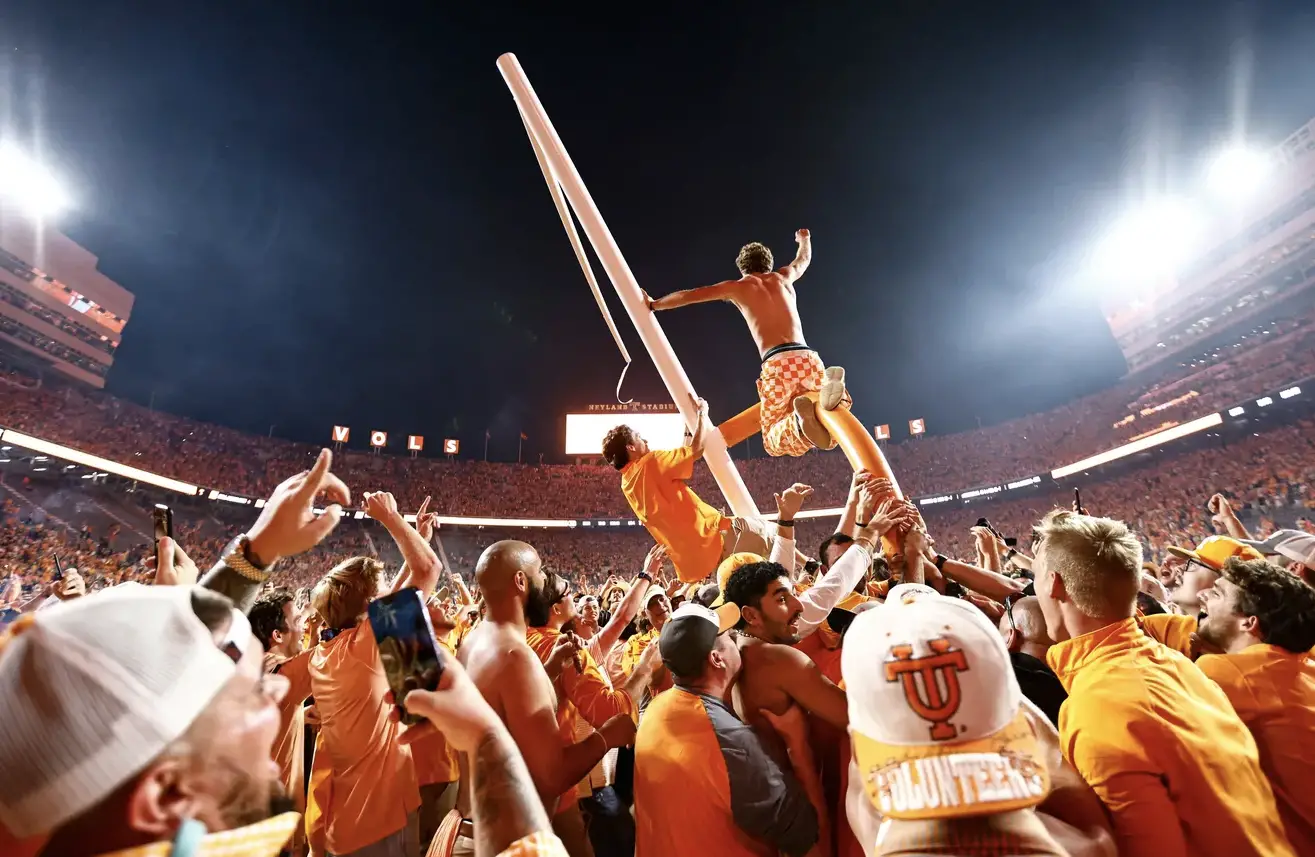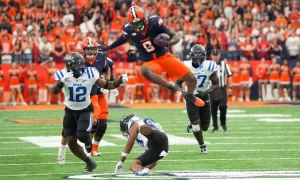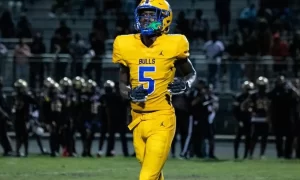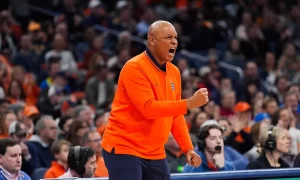The power of college football is undeniable. We have become a football-obsessed country, and while we tolerate and sometimes celebrate other sports, we do not smother them like we do football.
The highest-rated television series last year was Sunday Night Football. The second was Thursday Night Football. The difference between first and third (“NCIS”) was an average of 7 million viewers. That is the same discrepancy between third and 64th (“The Goldbergs”). And it’s not just the NFL. ABC’s Saturday night college game was 52nd. The most watched non-football sports telecast was the NBA’s Saturday night game on ABC at 76th (just ahead of “That’s My Jam”). Football is not only winning, it’s winning in a blowout.
College football has ridden the NFL’s massive wave of popularity by delivering big brands, prime TV windows, and the league’s future stars. While CFB used to be a regional sport, today it’s become far more nationally relevant. The common critique though, is the sport is dominated by a precious few. The unpredictable parity of the NFL is nowhere to be found in college. We know the power brokers on campus before the season kicks off. The playoff party is only for the rich kids.
This context is making the ’22 season as interesting as any in recent memory. Syracuse’s shocking run to 6-0 and 14th in the country is symbolic of a crazy first half of the season. The Orange went from bottom-dwellers in the ACC to a candidate to host College Gameday. Kansas, the Big 12 mirror image of the Orange, was the season’s best story by early October.
Alabama looks vulnerable after losing to Tennessee and struggling with Texas and Texas A&M. Clemson has been pushed by Wake Forest and Florida State. Ohio State finally has an equal in the Big Ten with Michigan. And Georgia only became part of the bejeweled elite 10 months ago. Let’s see how it handles success down the stretch. The usual suspects have question marks.
The #3 Volunteers’ titanic victory over the Tide was a program-changing weekend on Rocky Top. An SEC which has been dominated by Alabama, LSU, Auburn, Georgia and Florida to varying degrees in the last 15 years now has a party-crasher in its midst. Also consider #7 Ole Miss as one of the traditionally uninvited having itself a moment. Lane Kiffin’s offense is hard to slow down, and the Rebels have a chance at the SEC Championship Game if it can trip up the Tide the same way the Vols did.
The Big 12 and Pac-12 have had fistfuls of mud thrown in their face over the last decade. Aside from Oklahoma, no one in its conference has been considered a power during the playoff era. But the Sooners have major issues so the door has been opened for TCU, Baylor, Oklahoma State and the teams from (gasp) Kansas to burst through. On the west coast, UCLA is still undefeated, while Utah, Oregon and USC all have had extremely strong starts to the season.
Last year a Group of 5 team broke down the door of the elites when Cincinnati dropped by the Playoff, signaling what hopes to be a trend. Add that to an expanded postseason that will hit in 2-3 years, and CFB’s access to a title has opened wider than ever before. NIL deals have potentially spread better talent to more places, and the transfer portal has helped downtrodden programs reboot quicker like the success stories at Syracuse, Kansas and K-State. Huge TV money means better facilities, recruiting budgets and coaching salaries across the spectrum. This has helped lift more programs into contention.
We are a football nation, and as the NFL whistles its way to eye-popping wealth (the Commanders would sell for $6 billion), college football bump-drafts right behind. The only hindrance was a short guest list. But this season hopefully is proof that’s changing too.


















